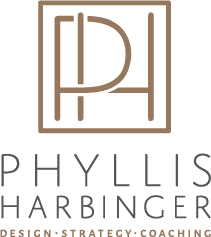Cash Saving Tips In a Recession-Driven Economy
As inflation continues to climb and the Fed once again raises the rate .75%, it is time to prepare your business for financial crisis. Hopefully, things will not get too challenging, but we are already seeing a drop in demand and the surplus in our industry keeps growing, especially in retail.
Many designers are also reporting a slowdown in foot traffic at showrooms and less new client inquiries.
All of these shifts directly affect small businesses' cash flow. I attended a webinar today with a Morgan Stanley expert who believes the Recession started in late August/early September and will be with us through the first half of 2023. While we all pray that there will be a correction in a few months, we need to consider demand, employment numbers and the current inflation status. To do this, you really need to put a plan into action to conserve your cash!
My Dad always told us "Cash is King" and he was right. My first business mentor suggested that you keep six months of wages in your savings account in the event of a crisis-whether it be economic or health-related. Having the cash-flow constant will enable you to pay wages, bills, and other expenses, but it will also be helpful as you look at the market.
In the webinar today, they discussed the state of the dollar vs. the euro, and we also learned about emerging markets. We all know that the value of the dollar is at an unprecedented high in Western markets, for the first time in approximately twenty years. If you have extra cash on hand, purchasing overseas could save you 20% over years past.
Also of note is the interest in emerging markets, especially India, which is currently growing faster than any other market, and while bonds have gone down with stocks, other opportunities and buying low are great options to set yourself up for future income.
If you are in a squeeze currently, you may want to leverage some of your trusted partners.
You can talk to your bank. If you use a large bank, like Chase, still have a great deal of capital, and they can be very sympathetic to your situation and may offer a line of credit, more attractive deferral fees or extensions on existing loans. It never hurts to inquire and can open new doors. You may also still be able to qualify for the PPP (Payment Protection Program) loans that were offered by the SBA (Small Business Association). The rates are very attractive with long payoff periods.
You may also want to speak to your trusted vendors and showrooms. Perhaps you have a proforma account. If you have been a valued client, you can ask for terms. They will undoubtedly consider this.
Another strategy that we employed was to run a full P&L, Cash and Accrual, to see where we were at after the third quarter and what we needed to focus on. We are almost at the end of the year with less than two months to go so print out your ledger and look at everything - expenditures, income, profit.
You may decide it is time to cancel unnecessary subscriptions. There are services and apps that help you identify these charges, which I highly recommend you look at. Tightening the belt can be painful but not as painful as the sleepless nights, worrying about how you will make payroll or pay your bills.
If you employ some of the strategies above, you may find that the panic subsides.
When you are not panicked, you make better decisions and in this economic downturn, this is essential to the survival of your business.

